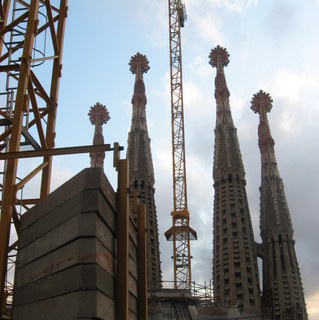“What is teaching?”
A Haiku by Bill Maroon
We meet awkwardly
I invite you to walk
I find you dancing
From Teaching and the Religious Imagination by Maria Harris
Could anything better describe the first day of school and lay out the whole task of teaching and cultivating students’ knowledge, so succinctly? I was thrilled with this haiku immediately, and it prompted me to ask myself, how are my students already “dancing” with mathematics?
I mentioned in my last post that my guiding principle in my math classes this year will be cultivating my students’ power to create mathematics together. I was keyed into this particular phrasing by Tim Monreal on Medium, who is building on Paulo Freire’s paradigmatic work in pedagogy. As I reflected on the principles of progressive education, I adapted it — and as I test it against my vision of what a progressive math classroom should look like, it succeeds every time.
I can describe how each part of that phrase suggests what a classroom that uses it as a guide will look and sound like, how it will be structured and what its product should be. Those descriptions will be largely political and philosophical in nature — I will be discussing conscious ideals. But standing right behind those ideals will be a series of fundamental assumptions about what math and my students are in relation to one another, and what my rightful participation in their process is. At that level, I will be speaking of psyche and spirit, because math’s transcendence and immanence, its subjectivity and objectivity, make the affinities between psyche, spirit, and math too powerful to pass over.
This might take a few posts.
So. In no particular order.
Students’ power to create. This little flower is precisely what I gathered from Monreal’s article linked above. He is contrasting this with a broader (and vaguer) commitment to “creativity” in the classroom. The trend to foster creativity in education is popular now, perhaps even a buzzword among the education-reform types. This manifests itself in all kinds of ways; for instance, I notice that an “A” has popped up in the acronym “STEM” in some places, making it “STEAM”. That is to say, when we think about the complex of fields captured by Science-Technology-Engineering-Math, we are also meant to consider the “Art” in their midst. Thus STEAM, rather than STEM.
This is all well and good, and I really do appreciate an attempt to bring together fields that are often understood as disparate. But let’s dig a little. What exactly is the relationship between Art and Science-Technology-Engineering-Math, as those fields are popularly construed now? I’ve seen wonderful visualizations of quantifiable processes or mathematical concepts and no one doubts the inherently art-like beauty of natural processes at all levels.
But something else is lurking about here, and I couldn’t quite put it to words until I read William Deresiewicz’s fantastic article in Harper’s about the neoliberalization of higher education, the slow and steady mission creep of college into an information transfer focused primarily on business. I have questions about some of Deresiewicz’s conclusions, but he gets right to the heart of my suspicion on creativity and that A in STEM. He says:
“Creativity,” meanwhile, is basically a business concept, aligned with the other clichés that have come to us from the management schools by way of Silicon Valley: “disruption,” “innovation,” “transformation.” “Creativity” is not about becoming an artist. No one wants you to become an artist. It’s about devising “innovative” products, services, and techniques — “solutions,” which imply that you already know the problem. “Creativity” means design thinking, in the terms articulated by the writer Amy Whitaker, not art thinking: getting from A to a predetermined B, not engaging in an open-ended exploratory process in the course of which you discover the B.
Yes, 100%. The ‘A’ in STEAM cannot possibly be open-ended self-expression of some truth. It is not a living, speaking thing, not a spontaneous gesture. It is Design, that chimera of hope to anyone with a restless soul that finds themselves working in a technology or corporate setting, because it makes you think you can actually create something — but you can’t. All you can do is to make a product more producty (or maybe less producty, and so more profity).
STEAM shouldn’t have the A for Art, but the D for Design. We’re all being STEM’D to Death, for lack of any Art that is Alive.
And this is what makes Monreal’s instinct so appropriate — really, it’s what make Freire whole program, assuming that all education is political, so valuable and necessary and true. Creativity in pedagogy is not enough. If education is to produce empowered, critical, creative agents in the world, they must have the power to create. A student who has the power to create will engage their world as Creation . They will be able to evaluate and critique the creations of others. This includes political platforms, historical lenses, economic supersystems, (c.f. neoliberalism and capitalism) as well as literature, and scientific claims and (yes) mathematical propositions.
What else can education be about other than this?
Next up, I’ll talk about the power to create mathematics.

3 Comments